8.2 /10 1 Votes
4.1/5 GOG Publisher Sierra Entertainment | 4/5 GamesNostalgia 4.2/5 My Abandonware Initial release date 1994 Developer Sierra Entertainment | |||||||||||||||||||||||||||||||||
Director(s) Roberta WilliamsLorelei ShannonAndy Hoyos Producer(s) Mark SeibertCraig Alexander Programmer(s) Oliver BrelsfordTom DeSalvo Artist(s) Andy HoyosMarc Hudgins Composer(s) Neal GrandstaffDan KehlerJay D. Usher Similar King's Quest games, Sierra Entertainment games, Adventure games | ||||||||||||||||||||||||||||||||||
King s quest vii the princeless bride 1994 playthrough nintendocomplete
King's Quest VII: The Princeless Bride is a graphic adventure game developed and published by Sierra On-Line for the MS-DOS, Microsoft Windows and Apple Macintosh computers in 1994. It features high-resolution graphics in a style reminiscent of Disney animated films and is the only King's Quest game with multiple protagonists: Queen Valanice and Princess Rosella, who are both spirited away to the land of Eldritch, and Rosella is transformed into a troll. They must find a way to return Rosella to normal and find her true love, rid of a powerful evil force threatening this realm, and get back to their kingdom Daventry.
Contents
- King s quest vii the princeless bride 1994 playthrough nintendocomplete
- King s quest vii the princeless bride pushinguproses
- Gameplay
- Plot
- Story
- Characters
- Development
- Reception
- References
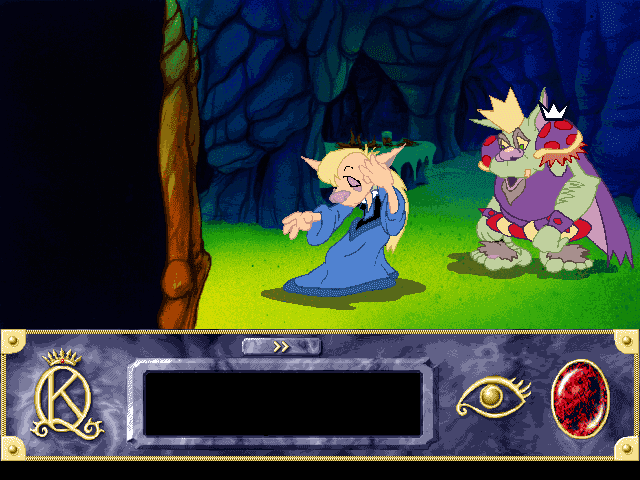
King's Quest VII is the only game in the series to divide the story into chapters. Although less linear in terms of ending than earlier entries in the series, King's Quest VII does not include as many different endings or optional tasks and plot threads as King's Quest VI. Some puzzles do have multiple solutions, and there are two possible endings. The game's reception was highly divisive, but ultimately mostly positive.
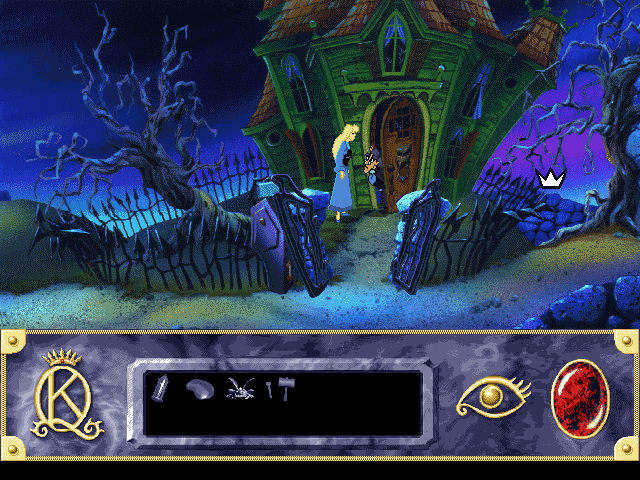
King s quest vii the princeless bride pushinguproses
Gameplay
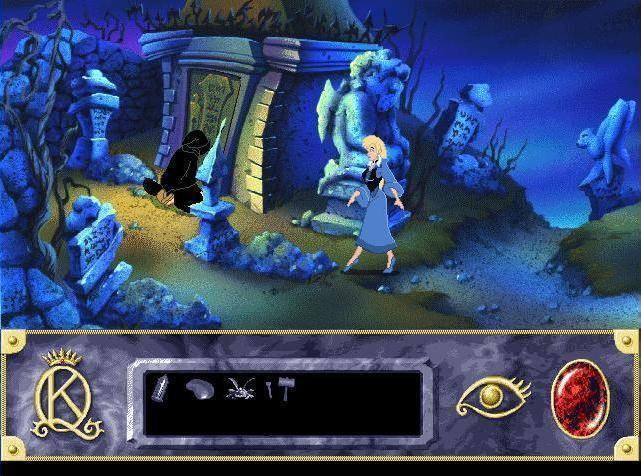
King's Quest VII is different from the previous King's Quest games in terms of structure. The action is separated into six chapters, each set primarily in a different region of the realm of Eldritch. The player alternates between two heroines, Valanice and Rosella, with each chapter. The two heroines travel through some of the same places during the course of the game, finally meeting up again in the end.
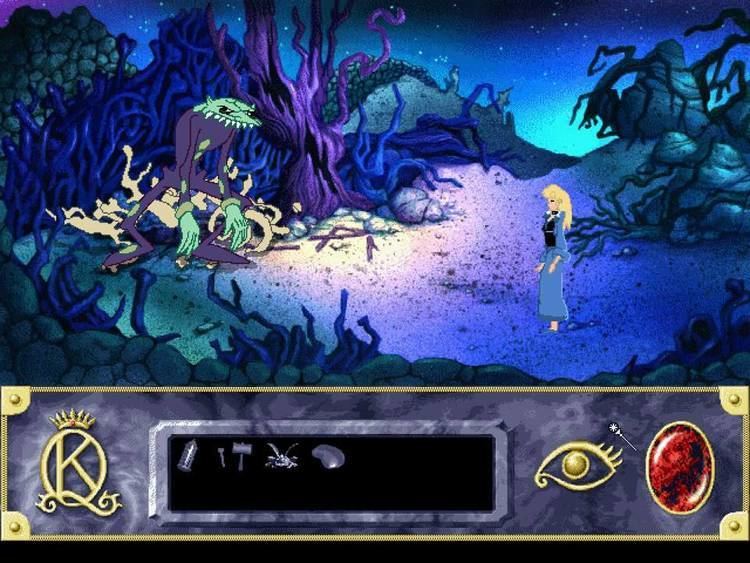
Aside from the multi-chapter layout, the most significant change in game structure is the simplification of user interface by the use of smart pointer. When playing the game, the pointer lights up when passed over an object that can be used. Players can get or use objects and talk to characters by directly clicking on them, whereas previous games required the player to select an action icon and then click on the environment, and can click on the environment without indicating which parts of the game could be interacted with.
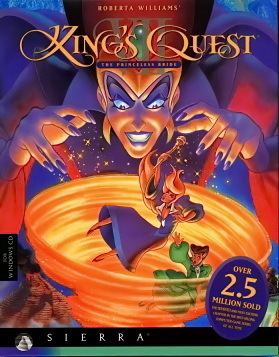
One of the game's highlights is its graphics; King's Quest VII has very elaborate and colorful graphics, compared to other games of the time, with painted backgrounds and animation techniques. The game makes use of SVGA graphics, new at the time, before The Dig and Space Quest 6. Also included are certain areas that pan from one side to the other, rather than going from screen to screen. Despite the cartoonish graphics characteristic of family-friendly computer games, the game includes several violent death scenes.
Plot
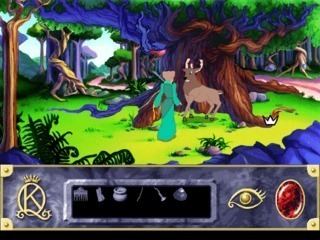
The name of this entry, The Princeless Bride, is a pun on the title of the novel and film The Princess Bride. Like most King's Quest titles, it is also a reference to the plot: Princess Rosella is soon to be a bride, but ends up in another world shortly before her marriage. It is the only entry in the series to feature Queen Valanice in a major role, and also the only one in which King Graham is not shown or mentioned at all (with one minor exception in version 1.4). Sierra marketed the game as an improvement in the series by stating that completion of earlier KQ adventures was not necessary to fully enjoy the game, even though the final chapter revealed a strong connection to the events of King's Quest IV.
Story
As the game opens, Queen Valanice is lecturing her daughter, Princess Rosella about the importance of marriage. Rosella is somewhat rebellious, and dreams of adventure rather than marriage. She catches a glimpse of a seahorse-like creature momentarily jumping out of and into a pond, leaving behind an image of a castle in clouds. Rosella dives in and Valanice follows, and they find themselves caught inside a gigantic magical whirlpool-like vortex. Rosella and Valanice desperately try to reach each other while being sucked down, but suddenly, a troll-like arm sticks in from the side of the whirlpool, grabs Rosella, and snatches her away.
When the actual game begins, Valanice lands in a desert in the realm of Eldritch, while Rosella finds herself transformed into a troll and engaged to be married to the king of the trolls. As the two characters attempt to find each other, they discover a terrible plot of the evil sorceress Malicia, who schemes to destroy anyone and anything that gets in her way as she seeks to become the ruler of Eldritch.
The game offers two different endings after the final confrontation with Malicia. The good ending is triggered when the extra life is used to revive Rosella's love interest Prince Edgar (introduced in King's Quest IV) at the very end of the game, which results in a grand wedding ceremony. The bad ending occurs if nothing is done or is triggered when the flower is used.
Characters
Development
The developers aimed for the effect of traditional animation works by Walt Disney Pictures and Don Bluth. As such, the full game contains more than five times the animation of any other Sierra game of the time. Art director Andy Hoyos specifically cited the intensity of the colors in Disney's Aladdin as an inspiration model. Composer Jay Usher said, "Just seeing how a character carries himself, acts, or walks ultimately determines the outcome of the music. We've tried to give each character [their] own 'mini-theme'. Each character is unique, so the music should be as well." The final game was much shortened from an earlier concept in order to fit the game on a single CD-ROM.
The game's backgrounds were hand-drawn and scanned. The game sprites were pencil-drawn on paper and also scanned, and then edited and colored digitally, not unlike the traditional animation process in animated feature films of the era. Of the 70 characters that appear in the game, some are more realistic and human-like (like the protagonists) and others more cartoony. According to lead animator (and character designer) Marc Hudgins, it was the first time when the art department had to use outside (Russian and Croatian) animation houses. Part of the challenge had to do with the fact that the animators had no experience in computer game animation.
Reception
Original reviews have been mixed, as some considered King's Quest VII to be a big letdown, especially since its predecessor was a groundbreaking success. Some critics and fans of the series disliked the use of Disney-style cartoon graphics.
On the other hand, upon release PCZone praised its "stunning graphics and superb gameplay." A reviewer for Next Generation approved of the series's transition from idealized fantasy imagery to highly detailed cartoon graphics, and said the game maintained the King's Quest standard for outstanding soundtracks. He concluded, "While it's certainly not the most challenging game available, it may be one of the most impressive in look and feel, and fans of the series should definitely check this one out." A review in Computer Gaming World hailed the game's "animation of quality that would make Disney proud." A retrospective verdict in Adventure Gamers described it as "an eminently playable, if not revolutionary, adventure game," and "a solid—if not stellar—entry in the King’s Quest collection."
